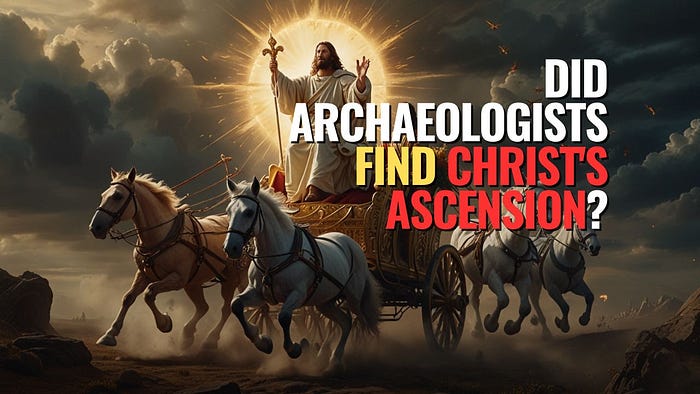Exploring the Unique Discovery of Christ's Ascension Artifact
Written on
Chapter 1: A Remarkable Archaeological Find
Did Researchers Uncover Evidence of Christ's Ascension?
The depiction of Christ's ascension, shown riding a chariot pulled by two horses, is featured on a 6th-century artifact unearthed from the ruins of an ancient church in Austria. This representation is particularly noteworthy.
Many impressive artifacts are revealed during archaeological digs, yet researchers often face delays in sharing their discoveries. In certain cases, items require conservation work before they can be fully showcased.
Two years ago, archaeologists conducted digs in a late antique site on Burgbichl Hill in southern Austria. There, they discovered a Christian reliquary concealed within the remains of an uncharted church. Thanks to the efforts of conservators, this artifact has been restored to its original state.

The Ivory Reliquary
For the archaeologists, this find was unexpected. Beneath the altar in a side chapel, they uncovered fragments of an object crafted from costly ivory. They deduced that it was a reliquary—a decorative container for relics of individuals deemed saints by the Church. The circular vessel boasted elaborate decorations and is regarded as the most sacred element of a temple, typically removed only when the temple is abandoned. In this case, however, that did not occur. This is the first such item discovered in an archaeological context within Austria.
The researchers referred to the artifact using the Latin term "pyxis," suggesting it might have been used to store consecrated hosts. Although fragments of wood were located, it remains unclear whether these could be remnants of a relic, such as that of the True Cross.
Gerald Grabherr, the archaeologist responsible for the discovery, states, "We are aware of approximately 40 such ivory containers worldwide. To my knowledge, the last one was found during excavations around a century ago."
The Conservation Process — An Integral Part of Archaeology
The conservation took place at the University of Innsbruck. As explained by conservator Ulrike Töchterle, ivory tends to absorb moisture from its environment, rendering it soft and vulnerable to deterioration. Consequently, the artifact from the Austrian church was in poor condition.
The conservation process extended over two years, primarily addressing the issue of dampness, as the marble chapel had a humidity level of 90%. This posed a significant risk of condensation and mold growth, while also necessitating a carefully controlled drying process to prevent cracking.
"This required us to implement a meticulous and extended drying technique," clarifies Töchterle. While much of the artifact is now irreparably damaged, researchers are pursuing a 3D reconstruction.
Biblical Imagery on the Reliquary
Intricate motifs are carved into the walls of the container, including a figure at the base of a mountain looking away. A hand extending from above appears to place something on the man's shoulders.
"This is a typical representation of God giving the law to Moses on Mount Sinai, marking the initiation of the covenant between God and humanity as described in the Old Testament," Grabherr elucidates.
Additionally, other biblical figures are depicted. One image features a man on a two-horse chariot, with a hand emerging from the clouds lifting him towards the heavens.
"We believe this represents Christ's Ascension, fulfilling the covenant with God. Linking Old Testament scenes with New Testament imagery is a common theme in late antiquity," Grabherr notes.
However, the portrayal of Christ's Ascension in a two-horse chariot, known as a biga, is uniquely distinct and previously unrecorded.
Chapter 2: Insights from Archaeological Discoveries
In this video titled "Jesus Christ - The Top Ten Archaeological Discoveries," viewers can explore the pivotal archaeological finds related to Christ, including this unique reliquary.
The second video, "Jesus Archaeology #14: New Evidence on Crucifixion and Jesus' Empty Tomb," provides additional insights into the archaeological evidence surrounding Jesus’ life and the events of the crucifixion.